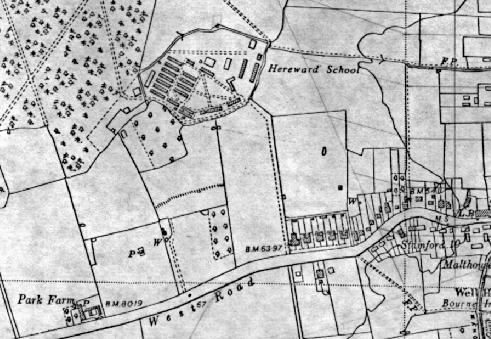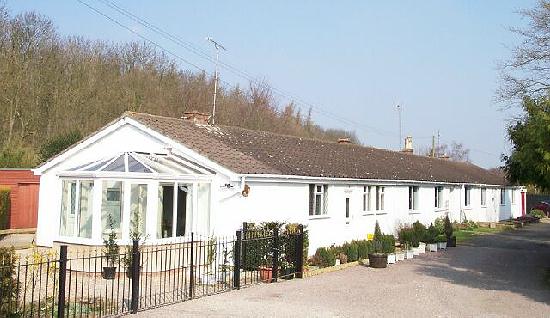|
The Hereward Approved School Approved schools existed in Britain during the early part of the 20th century for the training and rehabilitation of young offenders found guilty of serious crimes by the local courts or deemed to be beyond parental control. Children who were in need of care and protection or had persistently played truant from school were also liable to be committed. They were sometimes known as Home Office schools, industrial schools,
instructional centres or even reformatories and almost 100 existed in 1939 and were either under voluntary management or administered by the local authorities.
These schools provided training in engineering, agriculture, gardening and other trades, with domestic instruction for girls, in the hope that the youngsters would find suitable employment and lead an honest and blameless life once they had been discharged.
In 1940, at the request of the Home Office, responsibility for the buildings were taken over by Kesteven County Council and the county education committee accepted responsibility for the administration of the school. One of the part time staff during this period was Charles Sharpe, a local man who had won the Victoria Cross during the First World War. He taught gardening and physical training and by example, he also acted as an inspiration for many of the youngsters who had come from broken homes and who regarded him as a role model. The school continued to operate throughout the Second World War when a Luftwaffe aircraft dropped four high explosive bombs on it, presumably mistaking the huts for a military camp, causing a great deal of damage and resulting in two casualties, one of them Charles Sharpe who was injured by a splinter from the blast. Several boys who had reached the age of 17 also joined the Home Guard in Bourne and a special HQ Platoon was formed to take them but their recruitment was not welcomed by everyone in the battalion and this lead to a special order being issued by the commanding officer, Lt-Col Horace Stanton, on 8th September 1943. "This school is a Home Office approved school and is not a Borstal institution", he said. "The personnel of this platoon are seventeen years of age and are members of the community who have been less fortunate than the majority of citizens. They are at the Hereward School to be trained to be useful citizens and this can, in part, be brought about by their fellow Home Guardsmen encouraging them to realise they are members of the community and have the responsibilities as such. It is hoped that the reference to these fellow Home Guardsmen as 'the Borstal Boys' will cease." The minutes of the Bourne United Charities contain references in connection with arrangements for the boys to use the open-air swimming pool which had by that time come into their possession. Some of the boys also played football for the Morton Army Cadet team in the immediate post-war years and several were also selected for the village soccer side.
Towards the end of 1948, responsibility for the school passed to the county children's committee and at the same time the premises were purchased by Kesteven County Council. The establishment finally closed on 31st January 1951 despite a deputation from the county council to the Home Office requesting that it be retained but their efforts were unsuccessful. Boys who had completed their term left and the remaining 40 were gradually released on licence to their homes. One third of the staff were found employment in similar schools elsewhere in the country. Most of the buildings on the site were dismantled by a local firm, Green's of Kirkby Underwood, and the materials used for various office and storage buildings at other locations in the area owned by the Forestry Commission. The yard that still exists off Beech Avenue was the forestry depot of the time and the original living quarters used by staff at the school were preserved and are now the white, privately owned houses that can be seen at the entrance to the woods. Much of the land was subsequently swallowed up for residential development during the population boom in Bourne from the mid-1970s onwards. The camp itself was on the site of the houses in Forest Avenue and Woodland Avenue and on the green between them, which has been retained as an open space. The avenue of Lombardy poplars, which can be seen today, was the entrance road to the site and some surviving brickwork from the foundations can still be found in the grass.
See also Memories of Hereward Approved School
Go to: Main Index Villages Index |
|||||


